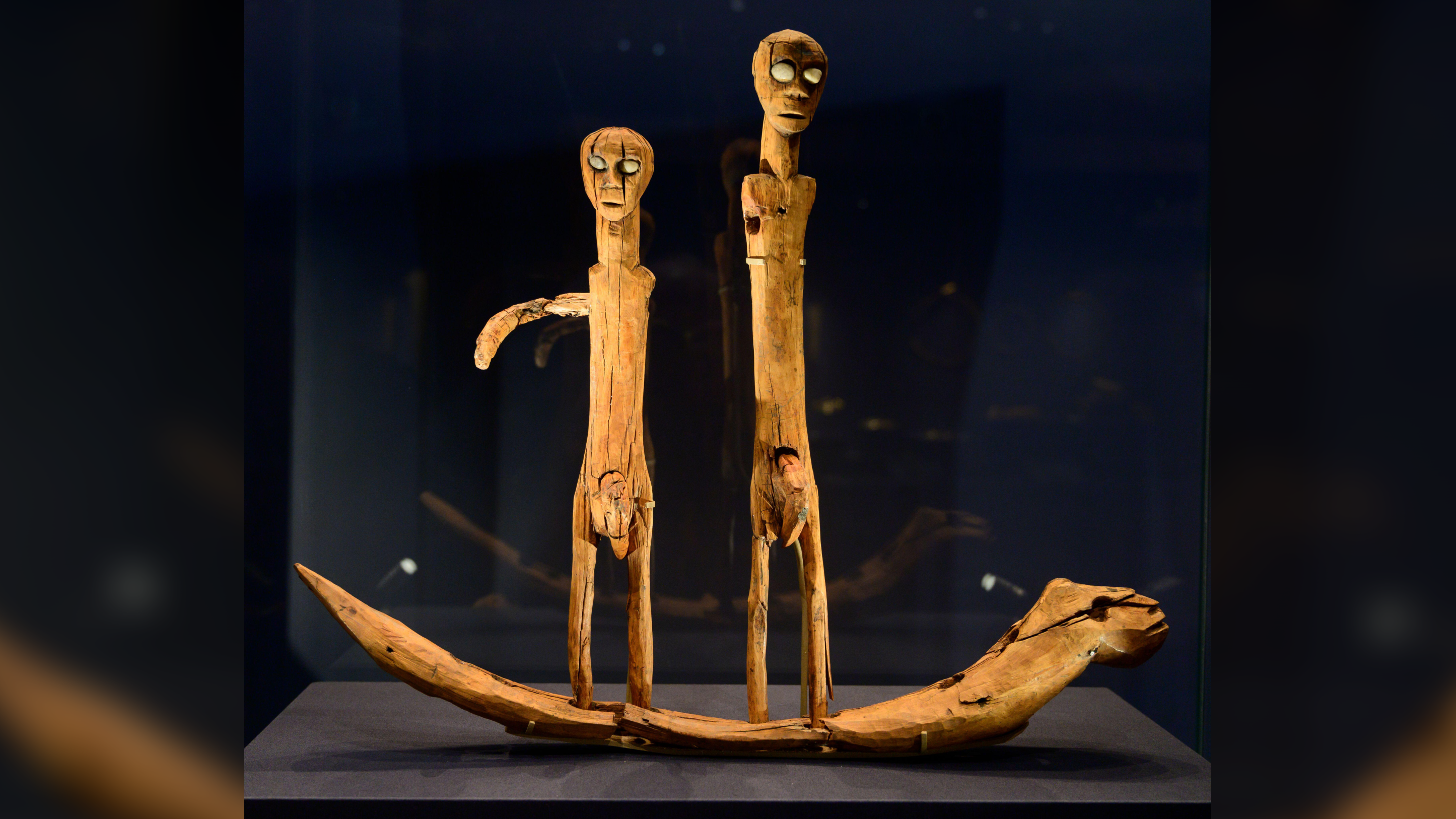Roos Carr figures: Creepy 2,600-year-old carvings with 'removable genitalia' and eyes that may have symbolized Odin's soothsayer powers
Spooky-looking wooden figurines with quartzite eyes are 2,600 years old and may be linked to a Norse god.

Name: Roos Carr figures
What it is: A set of figurines carved from yew wood and quartzite
Where it is from: Roos Carr, East Yorkshire, U.K.
When it was made: Circa 600 to 500 B.C.
This set of carved figurines was discovered in the parish of Roos, on England's east coast. The carvings, which have been carbon-dated to the Late Bronze Age, may have been offered to the god Odin.
When laborers were digging a drainage ditch in 1836, they discovered a set of eight human figures, two miniature boats and an assortment of arms and tiny weapons underneath a layer of blue clay. Three of the figures and one of the boats were in poor condition and unable to be removed.
The Roos Carr figurines have been studied for decades at the Hull and East Riding Museum of Archaeology, where they were originally donated in the late 19th century. Carved from yew wood, the human figures range from 14 to 16 inches (35 to 41 centimeters) tall, and their heads are inset with quartzite eyes. The sea serpent-headed boat includes partially drilled holes that could support up to four figurines.
Although a handful of similar figurines exist in England and Ireland, their meaning continues to elude experts. According to a 1990 study, one of the earliest theories put forth was that the eight original Roos Carr figurines represented the eight people on Noah's Ark. Another early theory suggested that the carvings were "sinister cult figures."
But the figurines may have actually been deposited in some sort of ritual related to the god Odin or his earlier incarnation called Ull, according to the Hull and East Riding Museum of Archaeology. A wizard and a shape-shifter, Odin is associated with yew trees. He also had only one good eye, having sacrificed the other one to see the future. The quartzite eyes of the wooden figurines are noticeably different sizes.
An additional clue is found in the figurines' groins. Small curved pieces of wood can be put into the drilled holes, making them detachable or "removable genitalia," according to the museum. But when the pieces are absent, the figurines can be seen as female. Odin was known to shape-shift into female form as well as into the form of a sea serpent.
The Roos Carr figurines "challenge our modern day conception of gender identity and gender roles," according to the museum, because the figures also have shields and clubs with them, which are usually associated with male warriors.
The fact that the figurines were discovered under a layer of clay suggests they were deposited in or near water around 2,600 years ago, according to the museum, which was a common place for ritual offerings in prehistoric times.
For more stunning archaeological discoveries, check out our Astonishing Artifacts archives.

Kristina Killgrove is a staff writer at Live Science with a focus on archaeology and paleoanthropology news. Her articles have also appeared in venues such as Forbes, Smithsonian, and Mental Floss. Kristina holds a Ph.D. in biological anthropology and an M.A. in classical archaeology from the University of North Carolina, as well as a B.A. in Latin from the University of Virginia, and she was formerly a university professor and researcher. She has received awards from the Society for American Archaeology and the American Anthropological Association for her science writing.
You must confirm your public display name before commenting
Please logout and then login again, you will then be prompted to enter your display name.
